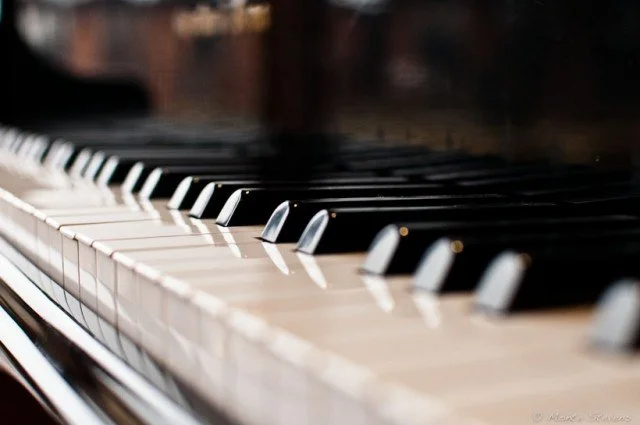Learning to play an instrument is a rewarding and fun thing to do, however, learning how music works can be a daunting task. “Music Theory” can be a scary term for some. The reality is that depending how you study/learn about how “it all goes together” music theory can be infinately complicated or significantly simplified. A paradox?
Yes, but a wonderful realization to those of us that would rather get to the lowest common denominator of an equation rather than understand all the possible permutations the lowest common denominator can produce.
Ok, here we go, a simplified overview:
The Music Alphabet
Western music is based on a music alphabet similar to the English alphabet, however there are a couple of twists. First of all, there are only 7 letters in the alphabet, A, B, C, D, E, F & G.
Now for the kicker…. in the English alphabet there is nothing between the letters A & B but in the music alphabet there is! Each of these letters are “notes”. All but 2 pairs of notes actually have a note in between them. For example, there is a note between A & B called A sharp (A#). You could also call this note B flat (Bb). Yes, the notes in between these pairs of notes have 2 names. Don’t worry, whether you call a note “sharp” or “flat” depends on what “key” a song is in. **More about “keys” below.**. The only 2 pairs of notes without these extra notes are the note pairs B & C, and E & F. This gives us 12 total notes in music: A, Bb, B, C, Db, D, Eb, E, F, Gb, G, Ab
Each note, right to left above, is a “semitone” or “half step” from the adjacent note. So A to Bb is one semitone or one half step and A to B is two semitones, or a whole step (two half steps).
What is a “key”??
No, it’s not the keys on a piano we’re talking about. A “key” is a group of 7 notes. There are 12 of these keys. Each of the 12 keys contains a unique set of notes, so no 2 keys are the same. The notes in each key are combined in different ways to create “chords”. These chords and notes are combined to make songs.
Patterns! Thank goodness!!
Once you realize there are only a few repeated patterns that put the most important components of music theory together you’ll start to see what I mean by “simplified”.
The key of C is the only key composed of “natural notes”, or non-altered (sharp/flat) notes. So the key of C = C, A, B, C, D, E, F & G. Notice the sequence starts with “C” and not “A”. That’s because the music alphabet typically starts with “C” given it uniquely contains only natural notes.
The key of C also sets the pattern of “whole steps” and “half steps” between the notes in all the remaining 11 keys. Since B & C and E & F are the only pairs that are half steps apart, the sequence is:
C-D = whole
D-E = whole
E-F = half
F-G = whole
G-A = whole
A-B = whole
B-C = half
The pattern whole-whole-half-whole-whole-whole-half is the result created by the key of C. All other keys must conform to this pattern. This is what makes each key unique!
The Table of Keys
The link below will take you to a diagram of all of the keys in music. Things to observe about this table:
* The 1st, 4th and 5th chords in every key are major (bright/happy/stable)
* The 2nd 3rd and 6th chords in every are minor (dark/sad/unstable)
* The 7th chord in every key is diminished (darker than minor)
* Each row in the table is unique, however many of the keys share some of the chords that are in other keys.
Theres much more to explore about this table, just remember to be on the lookout for “patterns”. They are everywhere in music. Once you learn to hear and identify them, understanding, playing and composing music is much more enjoyable and easy. Here’s the link to the table. Enjoy!

